A Digital Camera Glossary
Here is a glossary of terms that explains the features and functions of digital cameras including DSLRs, mirrorless cameras and phone cameras.


Like any other technology, art form or field, digital cameras have their own nomenclature. The alphabet soup of jargon can be as confusing and intimidating as trying to understand how all those dials, buttons, levers and menu options affect the pictures and videos that you capture. Fear not, because we've defined the most important words, phrases, commands and options you'll need to know when shopping for and learning to operate your new DSLR, mirrorless, smartphone or other camera.
1-inch sensor: A relatively large image sensor used in advanced, compact Nikon, Sony and Samsung digital cameras. It's only 13 percent the size of full-frame sensors found in pro cameras but much bigger than you get in a standard point-and-shoot or cellphone camera.
MORE: Camera Buying Guide
4/3 format – A camera format based on a sensor with a 4 x 3 aspect ratio that allows for interchangeable bodies and lenses among several manufacturers. Olympus and Panasonic are the main makers of 4/3 format bodies, while five other companies (including Leica and Sigma) produce lenses.
4/3 sensor – A 4 x 3 aspect-ratio sensor that's roughly one-quarter the size of a 35mm film frame.

Aperture - In photography, an aperture is an adjustable opening in the lens that regulates how much light passes through. Aperture controls depth of field - how much of the image, from foreground to background, appears sharp. A large aperture allows in both light rays directed straight at the lens (which produce a sharp image) and those coming in at angles (which appear blurry). The smaller the aperture, the fewer of these off-angle light rays enter the lens, allowing more of the image to appear sharp. Aperture is measured in a unit called f-stops, in which smaller numbers actually represent larger openings. An aperture of f1.4 (which only a few lenses can achieve), for example, is a very wide opening that puts very little of the image in focus. An aperture of f/32 (also rare) makes essentially everything in a sweeping landscape sharp.Between those extremes are aperture values that produce varying depth of field.
Aperture priority – A mode (abbreviated AV) available on nearly all advanced and some point-and-shoot digital cameras that allows the user to set a specified aperture value (in f-stops). The camera automatically adjusts the shutter speed to achieve proper exposure for the selected aperture.
Get instant access to breaking news, the hottest reviews, great deals and helpful tips.
APS-C – Advanced Photo System-Classic is an image sensor roughly one-third to one-half the size of a 35mm frame of film, or full-frame image sensor. APS-C image sensors are used in most consumer-level DSLRs and in many mirrorless cameras.
Backside illuminated sensor – Often abbreviated as BI or BSI, it's a type of image sensor designed to absorb more light in dim conditions. BSI is usually found in smaller sensors, such as those in some Nikon and Samsung mirrorless cameras, Sony point-and-shoot cameras and various smartphones, such as newer Apple iPhone and Samsung Galaxy S models.
Bit depth – The level of gradation used to define a shade of dark or light. Higher bit depth allows more accuracy and fidelity of captured images, and allows finer adjustments when editing. Most point-and-shoot cameras capture 10-bit or 12-bit images, while better DSLRs and mirrorless cameras capture at 12-bit or 14-bit.
Bracketing – Setting a camera to automatically take two to six quick shots with a change in a single setting to increase the chance of getting a perfect shot. The most common kind of auto-bracketing is exposure bracketing, but ISO, white balance, flash and focus can also be bracketed in many cameras.
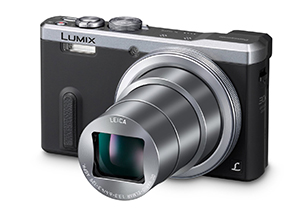
Bridge camera – This camera type falls between simple point-and-shoots and DSLRs or mirrorless cameras in both size and capabilities. They generally incorporate some advanced features — such as larger sensors, more powerful processors or sophisticated controls — but their lenses are not removable. Some bridge cameras have very long zoom lenses; 30X or greater is not uncommon.
MORE: Best Bridge Cameras
CCD – Short for charged coupled device, a CCD is a sensor type that reads data in a way that avoids the stuttering or distorted look of fast motion in video that results on some cameras. CCD sensors were once the most common in digital cameras, but the affordability and higher quality of CMOS image sensors for still photography has allowed them to mostly replace CCD sensors.
Chromatic aberration – Also known as "color fringing," this distortion appears when the camera lens fails to focus on all the colors where two points of high contrast meet (such as where the dark roof of a building meets the sky). Chromatic aberration appears as green or purple fringing at the point of contrast.
CMOS – Short for complementary metal oxide semiconductor, CMOS is now the most popular type of image sensor and can be found in everything from cellphones to pro DSLRs. Its low-light sensitivity and ability to provide live preview and video capture to DSLRs have made it extremely popular.
Contrast detection autofocus – This AF technology uses light sensors behind the lens, usually on the imaging chip itself, to measure when contrast is at its greatest point, which corresponds to maximum sharpness. It's generally slower than a rival technology, phase detection. Contrast detection AF is found in most point-and-shoot, cellphone, bridge and mirrorless cameras, as well as in video cameras. DSLRs also use contrast detection when they shoot in live view mode.
Crop factor – Originally, lenses on SLRs were designed to cover a full frame of 35mm film (1 x 1.5 inches), but most DSLR and mirrorless camera image sensors are smaller than a frame of 35mm film. When this occurs, the image they capture is cropped to the center of the image, effectively producing a higher level of zoom. Most of the dominant APS-C sensors, for example, have a 1.5X crop factor. A 50mm lens that works for portraits on a high-end camera with a full-frame sensor would be the equivalent of a slight telephoto 75mm lens on an APS-C camera.

Depth of field – The part of an image, from foreground to background, that is in focus. A shallow depth of field, appropriate for portraits, shows only a small portion in focus. Adjusting aperture is the main way to control depth of field. Large apertures of f1.4, f2.0 or f2.8 produce limited depth of field, whereas smaller ones such as f11, f16 or f22 are used for greater depth of field. A deep depth of field, often used for landscapes and group shots, captures virtually everything in sharp focus.
DSLR – The successor to the film SLR, a digital single-lens reflex camera uses a movable mirror along with a prism or additional mirrors to reflect an image from the lens into a viewfinder, so you can accurately frame and focus your shots. When you press the shutter button, the mirror flips up, allowing light to pass from the lens onto the image sensor, which records the photo.
MORE: Best DSLRs
Electronic viewfinder (EVF) – Unlike traditional DSLRs that use a mirror to reflect the image up to your eye, an electronic viewfinder is a tiny, high-definition LCD or OLED screen that provides a preview directly from the image sensor. It is found in some mirrorless and bridge cameras.
Exposure compensation – In complex lighting situations, your camera's light-metering system may result in pictures that are too bright or too dark. Adjusting the exposure compensation setting allows you to make images brighter or darker without having to resort to manual mode.
Face recognition – Many cameras have the ability to recognize a person's face (or multiple faces) when you're shooting a portrait, group shot or other scene, and set those as the points for optimal focus and exposure.
Flash modes – Your camera's built-in or external flash has a variety of settings, or modes, that help you perfectly illuminate your picture. TTL (through the lens) is the default mode, allowing your camera's processor to read the light when the flash comes on, and cut it off at the correct instant so it won't be underexposed or overexposed. Red-eye mode fires a brief light before taking the actual shot, to force your subject's pupils to constrict so they won't reflect red from their retinas back into the photo. Other modes include rear curtain sync, which fires late, to freeze the front of a moving subject while leaving a slight trailing blur behind it, and front curtain sync, which does the opposite.
Fisheye lens – An ultrawide-angle spherical lens that can capture up to a 180-degree field of view, or just about everything you can see in front of you. However, the image will be distorted, like looking through a goldfish bowl. Sometimes, this distortion is left as an artistic effect; other times, it can be minimized using image-editing software.

Focal length – An optical measurement that determines how much of what you see in front of you is captured by your camera's lens. A short focal length, such as 24mm, captures wide angle; a long focal length, such as 100mm, is telephoto. A "normal" focal length (50mm on a full-frame or film camera) roughly approximates how far away things appear to the naked eye. Focal length does not describe the physical size of the lens itself, but rather refers to its magnification.
F-stop – A diaphragm inside the camera lens, known as the aperture, can be opened or nearly closed, to regulate the amount of light that falls on the image sensor. The ratio of the lens's focal length to the diameter of the opening is the f-number, or f-stop. Due to the way the values are calculated, the smaller numbers (f1.2, f2.4) actually represent wider openings. Each full f-stop represents a doubling or halving of light. For this reason, photographers often describe shutter speeds in f-stops as well. For example, a shutter speed of 1/60 second is one stop less than 1/30 second.
Full frame – High-end DSLRs' and mirrorless cameras' image sensors are the same or nearly the same size as a standard 35mm frame of film, hence the name "full-frame" sensors. The focal length of lenses on smaller cameras is often translated into full-frame equivalents in order to make comparisons.
HD video – Most new digital cameras are capable of recording high-definition video, at a resolution of at least 1280 x 720 pixels (720p). Increasingly more cameras can capture video at 1920 x 1080 pixels, known as 1080p or full HD. And some can even capture video at 3840 x 2160 pixels, known as 4K or Ultra HD.
MORE: How to Shoot Great Video
HDMI – The High-Definition Multimedia Interface is the most common cable and port for transmitting HD video and digital audio between consumer devices such as game consoles, set-top boxes and HDTVs. Many digital cameras have a mini-HDMI jack that allows them, with an adapter cable, to send HD video directly to a TV.
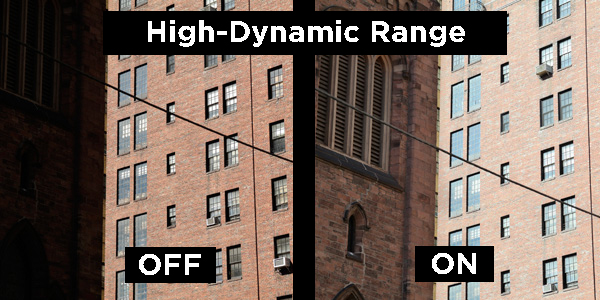
High dynamic range – Most digital camera image sensors cannot capture the full range of brightness (i.e., from shadow to highlights by midday sun) that the human eye can. HDR helps capture that range of brightness by taking several quick shots of the same scene, but with slightly different exposure settings, and then combining them.

Histogram – The histogram is a visual representation of how the highlights and shadows are distributed in your scene, with the edges representing the extreme highlights on the right and shadows on the left. Ideally, it should display as a bell curve, with most of the scene falling in a middle level of brightness. A histogram skewed toward the light or dark side of the range can indicate if your picture will be too contrasty, dark, flat or overexposed. Many cameras can display a histogram in the image preview so you can adjust settings beforehand. The image playback mode on the camera, as well as photo-editing programs, often display the histogram as a guide to the edits that will improve the look of the photo.
Image sensor – The heart and soul of every digital camera, it's the silicon chip (generally using CMOS but sometimes CCD technology) that captures the picture or video you're shooting.
Interval photography – A setting found on many advanced still and video cameras that allows the user to program a camera to take photos or video frames at regular intervals — typically from once per second up to once per hour — to achieve a time-lapse effect.
Interchangeable lenses – DSLR and mirrorless camera lenses can be removed, allowing the photographer to choose the best lens for a particular type of shot.
MORE: DSLR vs. Mirrorless Cameras: Which Is Better for You?
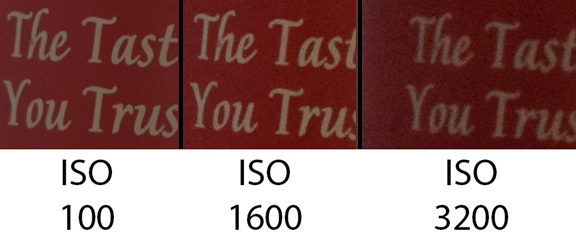
ISO – During the film era, ISO (and its predecessor, ASA) were indicators of the film's sensitivity to light. Today, ISO refers to the sensitivity of a camera's image sensor. ISO values generally start around 100 and often go to 25,600 or higher on newer DSLRs and mirrorless cameras. Each doubling of the ISO value — for example, from 100 to 200, or 400 to 800 — denotes a doubling of light sensitivity. A low ISO produces the best images, whereas high ISO settings allow shooting in lower light but at the cost of more "noise" — essentially static that produces a grainy appearance. Camera processors are getting continually better at removing noise from images, but they sometimes smear out fine detail as well. The rule of thumb is to shoot at the lowest ISO that allows you to set the aperture and shutter speeds you need.
JPEG – The Joint Photographic Experts Group file format is the most popular for storing digital images from a camera. To speed up operations, as well as save storage space, JPEG images are compressed; the degree of compression determines the quality of the image. JPEG image quality is not as good as when the image data is saved without compression (RAW). However, the RAW file format requires more storage space, takes longer to capture and process, and is not standard (each camera manufacturer has its own version).
Lens mount – The opening on the front of a DSLR or mirrorless camera into which an interchangeable lens is fitted. In general, each camera maker has its own lens-mount style, though micro 4/3 mounts are the same, allowing those cameras to share lenses.
Light metering – Light metering is the practice of measuring the light on a subject to determine exposure settings (aperture, shutter speed, ISO). Sensors inside digital cameras measure the amount of light reflected from the subject to automatically set exposure, but the readings can also serve as a guide for photographers operating a camera manually.
Light metering modes – The most typical metering modes are spot, in which a small cluster of sensors in the middle of the frame determines the amount of light falling on the subject; center-weighted, which measures half the light from the spot and half from the corners and averages them; and matrix metering, which measures a number of points throughout the frame and averages them.
Live view – A feature built into almost all digital cameras and video cameras that allows the user to preview the subject on an electronic screen or in an electronic viewfinder in real time before snapping a photo or starting to record video.
Macro lens – A lens specifically designed to shoot close-ups (4 inches or nearer) with little or no distortion. It's also known as a flat-field lens.
Megapixel – A pixel, also called a picture element, is the smallest part of an image that can display full color. Even the smallest image sensors now create images with millions of pixels, known as megapixels. A higher number of megapixels is not necessarily better; it simply refers to the amount of detail that can be recorded, not the quality or accuracy of the image itself.
MORE: How Many Megapixels Do You Really Need?
Memory card – A tiny, flat, solid-state electronic device that records digital data. Most digital cameras and video recorders save the images or clips onto the SD (secure data) card. The larger CF (compact flash) card is found in many "pro" DSLR models. Each card can typically hold between 1GB and 64GB of data, or anywhere from 25 to 1,500 images or 5 minutes to an hour of video.
Micro 4/3 – This is an implementation of the 4/3 sensor format (originally used in DSLRs) for mirrorless cameras.
Mirrorless camera – An advanced type of digital camera with an interchangeable lens system that eschews the mirror viewfinder system found in DSLRs in order to be smaller and lighter. Instead, mirrorless cameras display an image preview on an LCD or OLED screen. Many mirrorless cameras have only a rear screen for previewing photos, similar to a point-and-shoot or cellphone camera. More-expensive models also have electronic viewfinders that make them more like DSLRs.
MORE: Best Mirrorless Cameras
Moiré – A wavy pattern that can appear when the object being photographed has repetitive details that exceed the resolution of the image sensor. Intricate fabric weaves, the screens in windows and even hair can produce moiré.
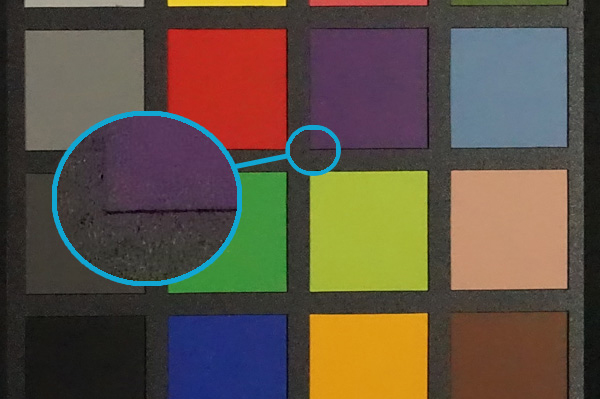
Noise – A mottled or grainy appearance in images caused by electrical fluctuations on the image sensor. Noise becomes more pronounced as the camera's ISO (light sensitivity) is raised, causing decreased detail and distorted colors. Noise is not always visible in small versions of photos used for online posting but can become obvious in large prints or cropped photos.
Noise reduction – An operation in the image processor that improves a noisy image by targeting and eliminating stray unwanted pixels (usually colored dots that are very different from the dots surrounding them). Noise reduction also removes some detail, however.
Normal lens – A lens that captures the same perspective as the human eye. On a full-frame camera, the normal lens is roughly 50mm. On a camera with an APS-C image sensor, a normal lens is about 35mm, and on a camera with a 4/3 sensor, it's about 25mm.
Optical image stabilization (IS or OIS) – This technology helps counteract the jittery motion caused by handholding a camera, which can result in blurred images at low shutter speeds (roughly below 1/60 second). Sensors detect movement and instantaneously signal the image sensor or a lens element to move in the opposite direction, canceling out the movement. A good IS system can allow the user to decrease the shutter speed by a factor of three (aka three stops) and still get a crisp image. Camera makers have different names for the technology, such as IS for Canon, VR for Nikon and SR for Pentax. [LD2]
Optical low pass filter (OLPF) – Also called an anti-aliasing filter, it's an ultrathin piece of glass or plastic mounted in front of, or bonded directly to, the image sensor. The OLPF blurs the image very slightly, to help break up the tendency of an oversharp image to produce false colors and moiré (herringbone-like patterns). Some new cameras with high megapixel counts (20 or greater) eschew OLPFs to help increase sharpness.
Optical viewfinder – In a DSLR camera, it's the combination of a movable mirror and a pentaprism or additional series of mirrors that allows the photographer to see through the main lens in order to view and frame the subject.

Panorama – The ability found on many cameras, as well as in image-editing software, to seamlessly "stitch" together a series of adjacent shots, each taken at a slightly different angle, into a single, ultrawide-angle photograph with up to 360-degree coverage.
Phase-detection autofocus – A commonly used autofocus technology that measures where beams of light from different parts of the lens land on a series of sensors. Seeing where the light falls allows the camera to calculate the position of the lens required to achieve focus on the image sensor. This method is generally faster than contrast detection. Once found only in DSLRs, it's now making its way into mirrorless cameras and even cellphones.
MORE: Camera Wars: Why Autofocus is the New Megapixel
Photosite – Also called a photoreceptor, it is a tiny well on an image sensor that collects photons of light and measures the brightness of red, green or blue light falling into it. Data from these three colors is combined to produce the pixels that make up a digital image.
Point-and-shoot – Also known as P&S, these are simple cameras in which the only tasks needed to take a photograph are to turn on the unit, point it at the subject and press the shutter button. Even most sophisticated, semi-pro and professional cameras have an Auto function that's essentially a P&S mode. Point-and-shoot has come to denote relatively small cameras that don't accept interchangeable lenses, even though some of them may offer advanced features and control options.
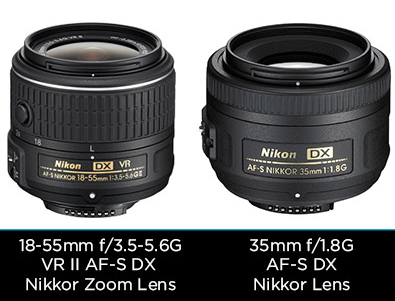
Prime lens – A lens with a single focal length, be it wide, normal or telephoto. Compared to a zoom lens, a prime lens of commensurate quality is generally cheaper, faster (allows more light to pass) and produces less distortion.
Program mode – This common mode on cameras automates aperture and shutter speed while giving you control over white balance, ISO, flash and other settings.
Programmable menu – Also called Custom Functions (CF). On better digital cameras, the user has the option to select a variety of settings — ISO, shutter priority, aperture priority, exposure compensation, focus mode — and save them as the default values when the device is turned on.
RAW – A file format, usually proprietary to each camera manufacturer, that stores all the captured image data without compression. RAW files are usually processed outside the camera in editing software such as Photoshop. Compared to the compressed JPEG, the RAW file contains significantly more data, such as greater bit depth, and can be useful for "rescuing" shots that may have color issues or incorrect exposure. Cameras that allow images to be saved in the RAW file format can also be set to simultaneously capture JPEGs, so the user has the option of which format to use for each picture.

Scene modes – On most point-and-shoot cameras, as well as many DSLRs and mirrorless models, users can select modes with optimized settings for taking specific kinds of photographs, such as portraits, landscapes or night shots.
MORE: 5 Tips for Delicious Food Photos
Self-timer – The setting on almost every camera that delays taking the shot for a few seconds (usually 2 to 4 seconds or 10 seconds) after the user presses the shutter button. Its purpose is to give the photographer time to get into the picture, or to guarantee a steadier shot by avoiding having the photographer jar the camera when pressing the shutter button.
Sensor cleaning – All image sensors hold an electrical charge, which attracts dust and, in turn, hurts image quality. This is a problem for interchangeable-lens cameras, whose internals are exposed to the air during lens swapping. Many DSLRS and mirrorless cameras have a self-cleaning mechanism that vibrates the image sensor to shake off dust.
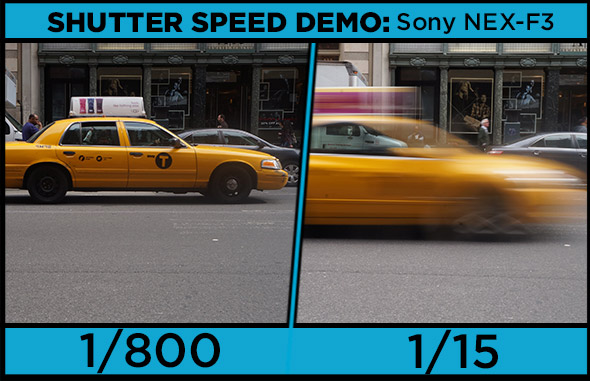
Shutter – Traditionally, this is a mechanical curtain that opens and closes to expose the image sensor. Many digital cameras have an "electronic shutter." The camera collects data from the sensor for a specified amount of time, corresponding to how long a mechanical shutter would expose the sensor. While high-end DSLRs and mirrorless cameras may feature both types of shutters, many point-and-shoots and lower-end cameras use an electronic shutter exclusively. Typical shutter speeds for consumer cameras range from 1 second to 1/4000 of a second, though longer (30 seconds) and shorter (1/8,000 of a second) speeds are featured on some models. Longer (slower) shutter speeds allow more light to reach the image sensor, which can be good for night shots but increases the chance of motion blur. Shorter (faster) shutter speeds can freeze fast action.
Shutter priority – The setting on just about all advanced and even some P&S digital cameras that allows the user to adjust the shutter speeds for a desired effect (such as a fast speed to freeze action). In shutter priority, the camera adjusts the aperture (f-stop) to produce proper exposure at the user-selected shutter speed. Some camera makers abbreviate shutter priority as "TV," for time value, on the camera's mode dial.
MORE: Street Photography Lessons: How to Get the Best Shot
SLR – Short for single-lens reflex, an SLR is a film camera in which a mirror reflects incoming light from the lens into an optical viewfinder, allowing the photographer to preview and frame a shot. When the photographer presses the shutter button, the mirror instantly swings up, and the shutter opens, exposing the film to the light from the subject. Its electronic equivalent is the DSLR, or digital single-lens reflex camera.
Telephoto lens – A lens with a long focal length (greater than 50mm on a full-frame camera) that brings the subject or action closer than it appears to the naked eye.
TIFF – Short for Tagged Image File Format, this image file stores all the data of an image in a "loss-less" format that allows the file to be smaller than RAW files but more detailed than JPEG images.
Time exposure – A photo in which the camera's shutter remains open for more than a fraction of a second — usually, between 1 and 30 seconds. Time exposure can be used to record a very-low-light scene with stationary objects to bring out the details. Moving objects will record as a partial or complete blur or streak, which helps convey motion or an expanse of time. Some astronomy time-exposure shots can take hours.
Viewfinder – An optical or electronic eyepiece that allows the photographer to preview, focus and frame the subject. Electronic viewfinders (EVFs) also allow a photographer to monitor video being shot.
White balance – To the human eye, white is white, whether it's being illuminated by the sun, a cloudy sky, a fluorescent tube or a tungsten light bulb. But to image sensors, that white may have a yellow, blue or green cast. White balance is an automatic or manual adjustment to a digital camera's color readings so whites appear to be white (and all other colors are also accurate) regardless of the illumination source.
Wide-angle lens – Has a short focal length (less than 50mm on a full-frame camera) to capture a wider field of view.
Zoom lens – The most common kind of lens used on digital cameras, a zoom lens moves to change its focal length and cover a range of perspectives, often from wide-angle to telephoto, keeping in focus through the entire range. The trade-off is that zoom lenses are usually heavier and slower (i.e., don't let in as much light), and they may introduce more image distortion than prime lenses, which have a fixed focal length.
Daniel Grotta has been covering digital photography since its infancy. You can follow him at the DigitalBenchmarks Lab Notes Blog on Grotta.net, on Twitter @TeamGrotta, on Google+ and onFacebook. Follow us @tomsguide, on Facebook and on Google+.
Senior photographer Jeremy Lips (@jlips76, Google+) and staff writer Alex Cranz (Alex Cranz @alexhcranz and on Google+) contributed to this piece.
